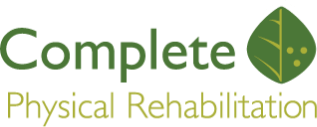Pain is a serious problem in today’s world. An estimated 1 out of every 5 Americans suffers from some degree of chronic pain, and 8 percent of those sufferers find the pain so intense that they can’t pursue their normal activities. It’s little wonder, then, that painkillers and anti-inflammatory drugs have grown into such a mammoth industry. Unfortunately, these drugs offer their own share of troubles, from addiction to dangerous effects on internal organs. Many people are now seeking effective pain relief that doesn’t come from a pill bottle. If you’re one of those people, you need to know about the amazing pain-busting potential of physical therapy.
The Problem With Painkillers
A variety of over-the-counter and prescription medications promise to ease pain and inflammation temporarily. Steroids do this by suppressing the immune system for people suffering from painful auto-immune disorders (such as rheumatoid arthritis). That same immune-suppressing power, however, also makes the body more vulnerable to infection. Long-term steroid use has also been associated with cataracts, glaucoma, hypertension, water retention, acne, high blood sugar and osteoporosis. NSAIDs (non-steroidal anti-inflammatory drugs) block the production of inflammatory chemicals in the body. These drugs aren’t necessarily safe, either. NSAIDs can cause stomach bleeding and kidney damage in some individuals. They have also been associated with elevated heart attack and stroke risks.
Perhaps the most ominous danger comes from opioid drugs. Opioids can deaden more than just pain. These powerful drugs caused over 70,000 fatal overdoses in 2017 alone. Some of these deaths may have been related to recreational drug use, but over 60 percent of the deceased were chronic pain sufferers.
Physical Therapy for All-Natural Pain Management
Physical therapy offers numerous advantages as a safe, effective, all-natural pain relief tool. A physical therapist takes each individual’s symptoms (and those symptoms’ underlying causes) into account when devising a physical therapy plan for pain management. Your plan might include modalities such as:
- Aerobic exercises to get the blood flowing and encourage joint lubrication
- Resistance training exercises to strengthen muscles, making physical actions less of a strain
- Cold laser therapy and/or massage therapy to boost circulation, relax tissues and reduce inflammation
- Electrical nerve stimulation to interrupt pain signals
- Chiropractic adjustment to help joints move more freely and correct painful musculoskeletal imbalances
- A soothing combination of heat therapy and cryotherapy
Physical therapy appears to have one more major contribution to make toward freeing pain sufferers from their symptoms. Some physical therapists have adopted “brain-rewiring” techniques such as graded motor imagery to help patients develop a new perception of their pain — one that allows them to master and minimize their responses to it. This form of physical therapy seeks to give individuals more control over their pain so that they can tolerate more exercise, which then reduces the pain even more.
Physical therapy can do more than just help you feel better. By providing you with non-pharmaceutical pain control measures, this form of care can help you steer clear of the side effects of prescription and non-prescription drugs. Better yet, you’re going beyond the temporary numbing of your symptoms by actually treating the underlying causes of those symptoms. Why settle for the illusion of relief when you can have the real thing — and improve your health and functionality in the process?
Looking for Answers to Your Pain? Talk to Our Physical Therapist
Our physical therapist will be happy to create a pain relief management program just for you. Contact us today for a consultation!

